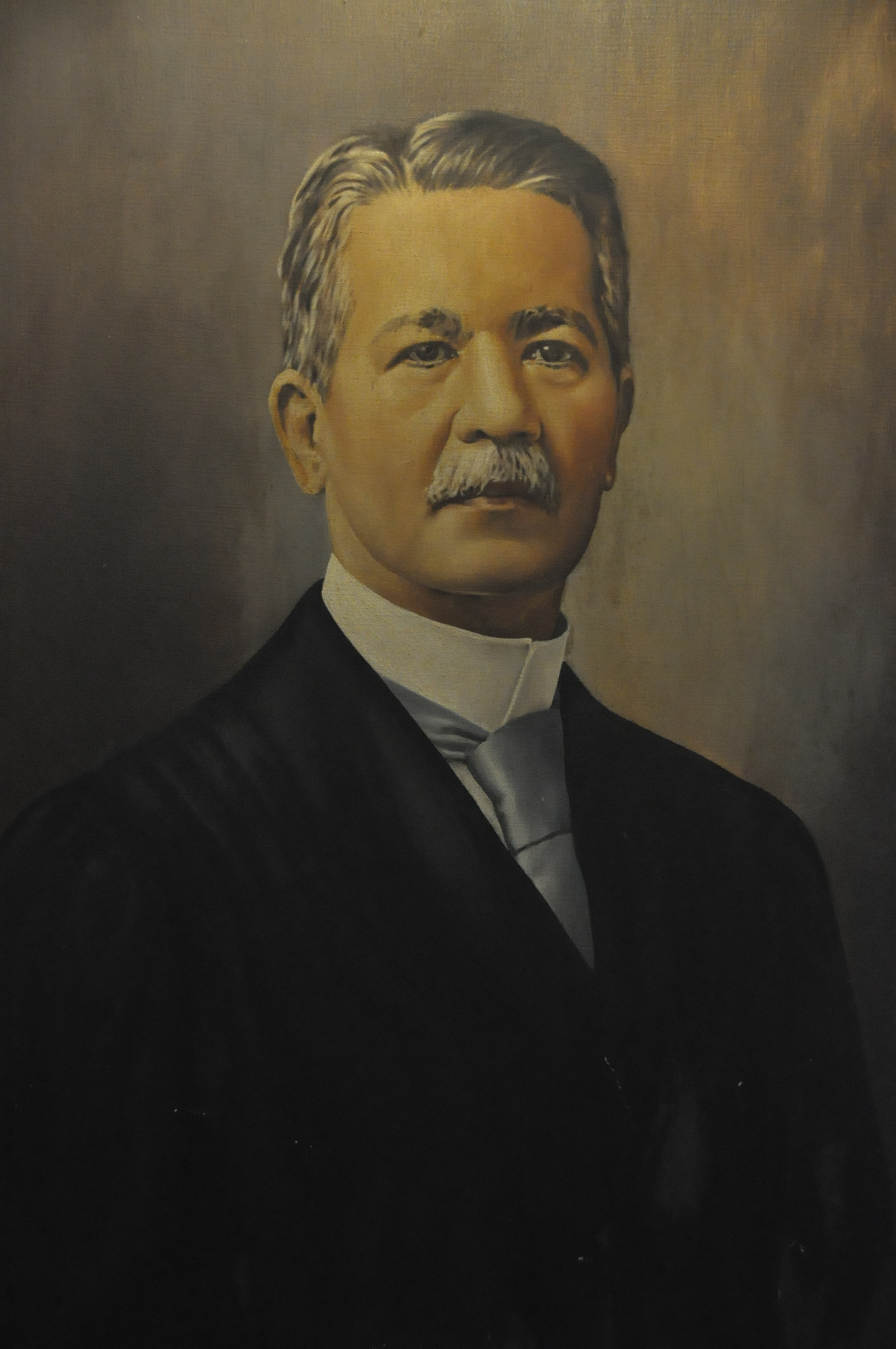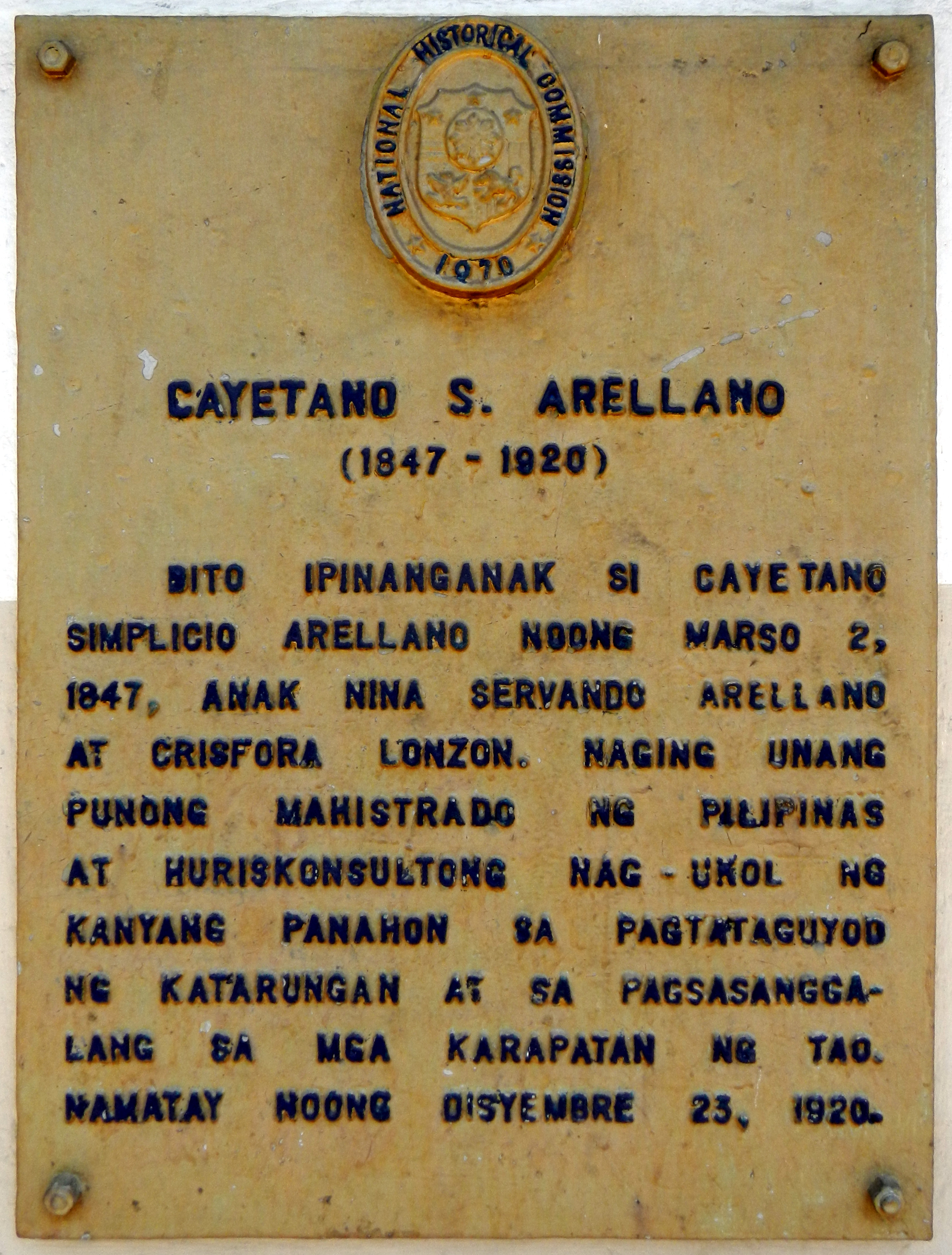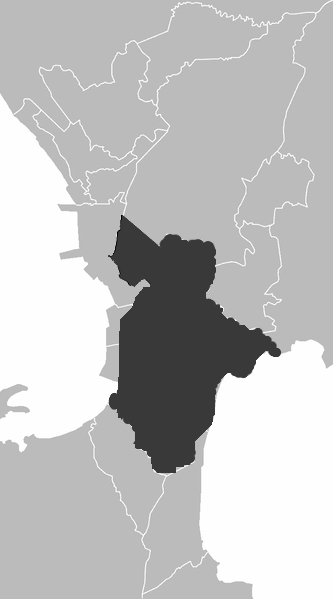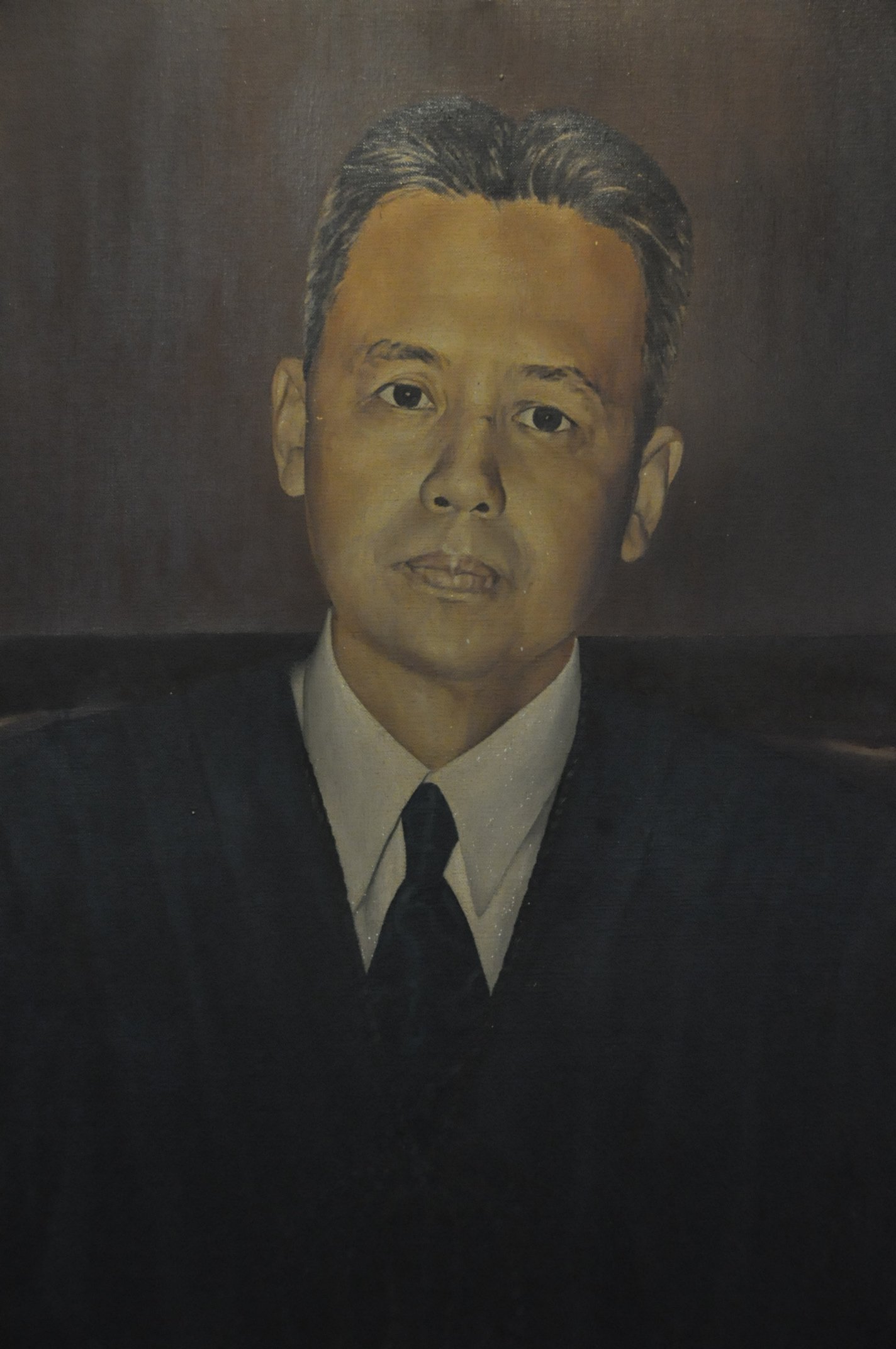|
Arellano
Arellano University (AU) is a private, coeducational, nonsectarian university located in Manila, the Philippines. It was founded in 1938 as a law school by Florentino Cayco Sr., the first Filipino Undersecretary of Public Instruction. The university was named after Cayetano Arellano, the first Chief Justice of the Supreme Court of the Philippines. It operates seven campuses located throughout Metro Manila and the main campus is located along Legarda Street, Sampaloc, Manila. The Arellano University School of Law is autonomous and managed by the Arellano Law Foundation. Its athletic team, the Arellano University Chiefs, is a member of the National Collegiate Athletic Association since 2009. History Arellano University began in 1938 by Florentino Cayco Sr. It was established as a law school by Cayco, the first Filipino Undersecretary of Public Instruction and an educator. The school was named Arellano Law College, which is derived from Cayetano Arellano, the first Filip ... [...More Info...] [...Related Items...] OR: [Wikipedia] [Google] [Baidu] |
Arellano Chiefs
The Arellano University Chiefs is the athletic team of Arellano University. It is a member of the National Collegiate Athletic Association (NCAA) and the National Capital Region Athletic Association (NCRAA). The team has several intercollegiate varsity sports teams for women and men at Arellano. History Originally as the Arellano Flaming Arrows, the team won the National Student's Championship (NSC) in the 1970s. Years later, the Chiefs entered the best-of-three finals in the men's basketball division of the NCRAA in 2006 when they were defeated by the Saint Francis of Assisi College Doves. In a repeat finals appearance in 2007, head coach Leo Isaac finally led the Chiefs to the championship with a 67–64 game three win against the EAC Generals. The Chiefs relied on their defense to stop EAC's Ronjay Buenafe, while supporters of the rival teams had to be restrained inside the Rizal Memorial Coliseum. The then Baby Chiefs also defeated the Olivarez College juniors team in ... [...More Info...] [...Related Items...] OR: [Wikipedia] [Google] [Baidu] |
National Collegiate Athletic Association (Philippines)
The National Collegiate Athletic Association (NCAA)Pronounced "N-C-A-A". is an athletics association of ten private colleges and universities in Metro Manila, Philippines. Established in 1924, it is the oldest collegiate athletic association in the country. The Philippine NCAA is not affiliated with the NCAA of the United States. Its current members are Arellano University, Colegio de San Juan de Letran, De La Salle–College of Saint Benilde, Emilio Aguinaldo College, José Rizal University, Lyceum of the Philippines University, Mapúa University, San Beda University, San Sebastian College – Recoletos, and the University of Perpetual Help System DALTA. Organization The Policy Board and the Management Committee handles the affairs of the league. The Board and the committee are composed of representatives of the ten member schools, and determine the acceptance and suspension of member schools, game reversals and replays, and other official actions. During the nearly yearlo ... [...More Info...] [...Related Items...] OR: [Wikipedia] [Google] [Baidu] |
Cayetano Arellano
Cayetano Simplicio Arellano y Lonzón (March 2, 1847 – December 23, 1920) was the first Chief Justice of the Supreme Court of the Philippines under the American Civil Government. Cayetano Arellano had occupied a high position in Aguinaldo's government. He worked with the Americans under General Otis and re-established the Audiencia Territorial as the Supreme Court. He served as Chief Justice from 1901 until his retirement on April 12, 1920, making him the longest to serve as chief justice in Philippine history. Early life Don Cayetano was born in Udyong (now Orion), Bataan to Servando Arellano, a working Spaniard and Crispora Lonzón, a meeting in Bataan. He started as a working student in Colegio de San Juan de Letran. After finishing his high school he transferred to University of Santo Tomas, where he finished his Bachelor of Philosophy in 1862 and Bachelor of Theology in 1867, he then continued studying and finished law in 1876. During the Spanish regime, he was appointe ... [...More Info...] [...Related Items...] OR: [Wikipedia] [Google] [Baidu] |
Cayetano Arellano
Cayetano Simplicio Arellano y Lonzón (March 2, 1847 – December 23, 1920) was the first Chief Justice of the Supreme Court of the Philippines under the American Civil Government. Cayetano Arellano had occupied a high position in Aguinaldo's government. He worked with the Americans under General Otis and re-established the Audiencia Territorial as the Supreme Court. He served as Chief Justice from 1901 until his retirement on April 12, 1920, making him the longest to serve as chief justice in Philippine history. Early life Don Cayetano was born in Udyong (now Orion), Bataan to Servando Arellano, a working Spaniard and Crispora Lonzón, a meeting in Bataan. He started as a working student in Colegio de San Juan de Letran. After finishing his high school he transferred to University of Santo Tomas, where he finished his Bachelor of Philosophy in 1862 and Bachelor of Theology in 1867, he then continued studying and finished law in 1876. During the Spanish regime, he was appointe ... [...More Info...] [...Related Items...] OR: [Wikipedia] [Google] [Baidu] |
Arellano University School Of Law
The Arellano University School of Law (AUSL) is the law school of Arellano University. AUSL was established in 1938, making it one of the oldest law schools in the Philippines. The school is managed by the Arellano Law Foundation, a non-stock and non-profit A nonprofit organization (NPO) or non-profit organisation, also known as a non-business entity, not-for-profit organization, or nonprofit institution, is a legal entity organized and operated for a collective, public or social benefit, in co ... organization established by the alumni and faculty members of AU in 1979. AUSL is considered a model institution by the Commission on Higher Education for providing quality education and producing successful graduates. Since 2000, the school has operated Lawphil, an online repository of Philippine jurisprudence, statutes, executive orders, and similar documents. Notable people References External links * Arellano University - School of Law- Official website {{Co ... [...More Info...] [...Related Items...] OR: [Wikipedia] [Google] [Baidu] |
Chief Justice Of The Supreme Court Of The Philippines
The chief justice of the Philippines ( fil, Punong Mahistrado ng Pilipinas) presides over the Supreme Court of the Philippines and is the highest judicial officer of the government of the Philippines. As of April 5, 2021, the position is currently held by Alexander Gesmundo, who was appointed by President of the Philippines, President Rodrigo Duterte following the Supreme Court of the Philippines#Composition, early retirement of his predecessor Diosdado Peralta in March 2021. The chief justice, who was first named on June 11, 1901, in the person of Cayetano Arellano, is the oldest existing major governmental office continually held by a Filipino, preceding the presidency and vice presidency (1935), senators (1916, or as the Taft Commission, on September 1, 1901) and the members of the House of Representatives (1907 as the Philippine Assembly). Duties and powers The power to appoint the chief justice lies with the president of the Philippines, who makes the selection from a li ... [...More Info...] [...Related Items...] OR: [Wikipedia] [Google] [Baidu] |
Metro Manila
Metropolitan Manila (often shortened as Metro Manila; fil, Kalakhang Maynila), officially the National Capital Region (NCR; fil, link=no, Pambansang Punong Rehiyon), is the capital region, seat of government and one of three List of metropolitan areas in the Philippines, defined metropolitan areas in the Philippines. It is composed of 16 Cities of the Philippines#Legal classification, highly urbanized cities: the Manila, city of Manila, Quezon City, Caloocan, Las Piñas, Makati, Malabon, Mandaluyong, Marikina, Muntinlupa, Navotas, Parañaque, Pasay, Pasig, San Juan, Metro Manila, San Juan, Taguig, and Valenzuela, Metro Manila, Valenzuela, as well as the municipality of Pateros. The region encompasses an area of and a population of as of 2020. It is the second most populous and the most densely populated Regions of the Philippines, region of the Philippines. It is also the List of metropolitan areas in Asia, 9th most populous metropolitan area in Asia and the List of larges ... [...More Info...] [...Related Items...] OR: [Wikipedia] [Google] [Baidu] |
Pasay
Pasay, officially the City of Pasay ( fil, Lungsod ng Pasay; ), is a 1st class Cities of the Philippines#Legal classification, highly urbanized city in the Metro Manila, National Capital Region of the Philippines. According to the 2020 census, it has a population of 440,656 people. Due to its location just south of Manila, Pasay quickly became an urban town during the History of the Philippines (1898–1946), American colonial period. History Early history In local folk history about the period before the arrival of Spanish colonizers, Pasay is said to have been part of Namayan (sometimes also called Sapa), a confederation of Barangay state, barangays which supposedly controlled territory stretching from Manila Bay to Laguna de Bay, and which, upon the arrival of the Spanish, eventually became known as Santa Ana de Sapa (modern day Santa Ana, Manila). According to these legends, the ruler of Namayan bequeathed his territories in what is now Culi-culi, Pasay, and Baclaran t ... [...More Info...] [...Related Items...] OR: [Wikipedia] [Google] [Baidu] |
Manila
Manila ( , ; fil, Maynila, ), officially the City of Manila ( fil, Lungsod ng Maynila, ), is the capital of the Philippines, and its second-most populous city. It is highly urbanized and, as of 2019, was the world's most densely populated city proper. Manila is considered to be a global city and rated as an Alpha – City by Globalization and World Cities Research Network (GaWC). It was the first chartered city in the country, designated as such by the Philippine Commission Act 183 of July 31, 1901. It became autonomous with the passage of Republic Act No. 409, "The Revised Charter of the City of Manila", on June 18, 1949. Manila is considered to be part of the world's original set of global cities because its commercial networks were the first to extend across the Pacific Ocean and connect Asia with the Spanish Americas through the galleon trade; when this was accomplished, it marked the first time in world history that an uninterrupted chain of trade routes circling ... [...More Info...] [...Related Items...] OR: [Wikipedia] [Google] [Baidu] |
Legarda Street
Legarda Street is a short street located in Sampaloc district in Manila, Philippines. It crosses through the eastern section of the University Belt area in a generally east–west orientation between the Nagtahan Interchange and the intersection with Nepomuceno Street in Quiapo. It is served by Legarda station of LRT Line 2. The street was named after Filipino legislator and resident commissioner to the United States, Benito Legarda y Tuason. Historically, its section in Sampaloc was formerly called ''Calle Alix'' (after a Real Audiencia of Manila magistrate of the 1860s, José María Alix y Bonache), while its section in Quiapo was formerly called ''Plaza Santa Ana'' and ''Calle Concordia'', respectively. Route Legarda Street commences at the Nagtahan Interchange as a westward continuation of Magsaysay Boulevard from Santa Mesa. It heads due west, traversing the southern edge of Sampaloc and skirting the northern boundary of San Miguel. After crossing Figueras Street, ... [...More Info...] [...Related Items...] OR: [Wikipedia] [Google] [Baidu] |
NCC Philippines
The National Cheerleading Championship, commonly known as NCC, is the Philippines’ first and oldest National cheerleading competition. The annual competition, which started in 2006, is modeled after U.S. competitive cheerleading competitions. NCC is a member of the Philippine Cheerleading Alliance (PCA), the official governing body for cheerleading in the Philippines. The PCA is the official sanctioned national federation recognized by the International Cheer Union (ICU), the world governing body for the sport of cheerleading. Background History National Cheerleading Championship started as a one-day invitational cheerleading championship in 2006. It started with two divisions, College and High School divisions, composed of ten teams and, was held in Araneta Coliseum. The inaugural event was judged by invited American judges, such as Joe Jackson of the Cheerleaders of America (COA), as well with known Filipino names in Philippine cheerleading. In 2008, twenty nine teams from all ... [...More Info...] [...Related Items...] OR: [Wikipedia] [Google] [Baidu] |
Supreme Court Of The Philippines
The Supreme Court ( fil, Kataas-taasang Hukuman; colloquially referred to as the ''Korte Suprema'' lso used in formal writing is the highest court in the Philippines. The Supreme Court was established by the Second Philippine Commission on June 11, 1901 through the enactment of its Act No. 136, an Act which abolished the '' Real Audiencia de Manila'', the predecessor of the Supreme Court. The Supreme Court compound, which sits in what is formerly a part of the University of the Philippines Manila campus, occupies the corner of Padre Faura Street and Taft Avenue in Ermita, Manila, with the main building directly in front of the Philippine General Hospital’s cancer institute. History Pre-hispanic period Prior to the conquest of Spain, the islands of the Philippines were composed of independent barangays, each of which is community composed of 30 to 100 families. Typically, a barangay is headed by a ''datu'' or a local chief who exercises all functions of government—executiv ... [...More Info...] [...Related Items...] OR: [Wikipedia] [Google] [Baidu] |





